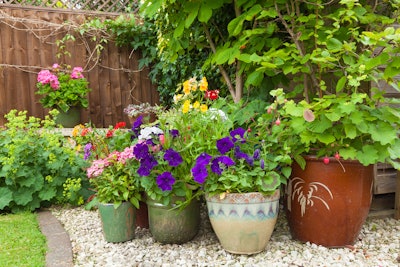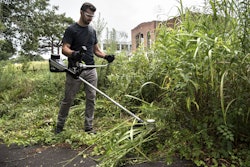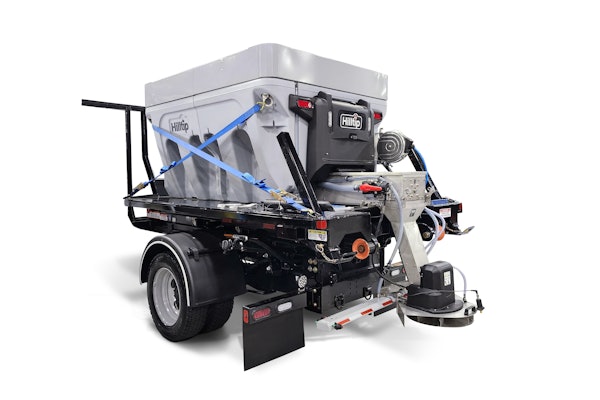
For customers facing these problems, the simple answer could be to turn to container gardens.
Container gardens offer customers the beautiful look and functionality of a garden, the versatility of being able to move the planters around and the option of more easily changing out the plant selection when the seasons begin to change.
Plus, if your customer does have a smaller yard and not a lot of room for additions, it gives him/her just enough green to make the space seem not as drab.
To help create and maintain a container garden your customers will want to show off and engage with, take a look at a few tips that can help keep these containers looking fresh and healthy.
Decisions, decisions
When choosing containers or advising clients on what kind of container is needed, remember that it’s much easier to grow plants in larger pots than in smaller ones, as larger pots will hold more soil, stay moist longer and will be able to resist fast fluctuations in temperature. Smaller hanging baskets will especially be more prone to drying out in extreme summer heat.
It’s good to talk with your customer ahead of time to see what plant varieties he/she will want in his/her containers, as the size and shape of the plant’s root system, whether it’s an annual or perennial and its growth rate will determine what size container will be most beneficial.
If a plant becomes rootbound, the soil will dry out quickly and the plant will no longer grow well, so be sure to allow each plant more than enough room for root growth. Also, keep in mind that light colored containers will keep soil cooler than dark containers will, so consider this when choosing where plants will be located in the space.
Container care
Container care will be similar to the care given to any traditional landscape, which means you need to carefully evaluate the lighting, water and fertilizer needs of the plants before choosing where they will be placed in the landscape.
Pay attention to what kind of sun exposure the plants will need and be sure not to put plant types with differing lighting needs in the same container. While it’s true your customer can ultimately move these containers around if he/she sees that a plant will need more or less sun exposure, it can save a lot of time and hassle to go ahead and do this research beforehand and plan the placement accordingly.
Unlike traditional gardens, container gardens will require more frequent watering, so make sure customers regularly check the soil of their pots and raised beds. If the soil surface is dry to the touch, it’s time for some water. When the temperatures get increasingly hot, it’s possible that customers may need to irrigate their containers on a daily basis. Be sure to let clients know that this will ring especially true for hanging baskets, as they are more affected by wind and will dry out faster.
Routine fertilization is also necessary, as this will help keep your customer’s plants in tip-top shape for the entirety of the season. There are many types of potting soil that will contain slow-release fertilizer in the mix, but it still couldn’t hurt to add in a few extra drops of liquid fertilizer whenever the plants are watered.
When you see your customer’s plants have started blooming out, it’s a good time to start removing any faded or dead blooms. Deadheading will help encourage new flowers to emerge and can help keep plants living longer into the season.
For plants that are larger, you could easily pull old blooms off with your fingers, but when dealing with smaller plants, it’s recommended that scissors or clippers be used.
Decoration
Along with the practical uses that accompany container gardens comes the purely aesthetic element of providing beautiful decorations.
If your customer’s space is limited horizontally, consider utilizing pedestals, windowsills or hanging baskets to add in a vertical layer to the space. This can not only help your customers get more containers into the space, but it can also help create height and depth to an otherwise flat area.
Larger single pots can be used as a standalone focal point in a landscape, or you could cluster a few smaller pots together to create a new look. If your customers are avid chefs, they could also incorporate a small kitchen garden in a raised bed or vegetable containers in one section of the space.
The possibilities are endless when it comes to choosing what plants can be showcased, as each container could have only one plant type serving as an accent plant, or they could have multiples grouped together to make a more exotic look.
Having layers present in your customer’s container design is also a beneficial way to create eye-catching focal points that everyone will enjoy. When creating these designs, be sure to include the thriller, filler and spiller options, and be sure to choose complimentary varieties when picking out leaf forms and colors.












